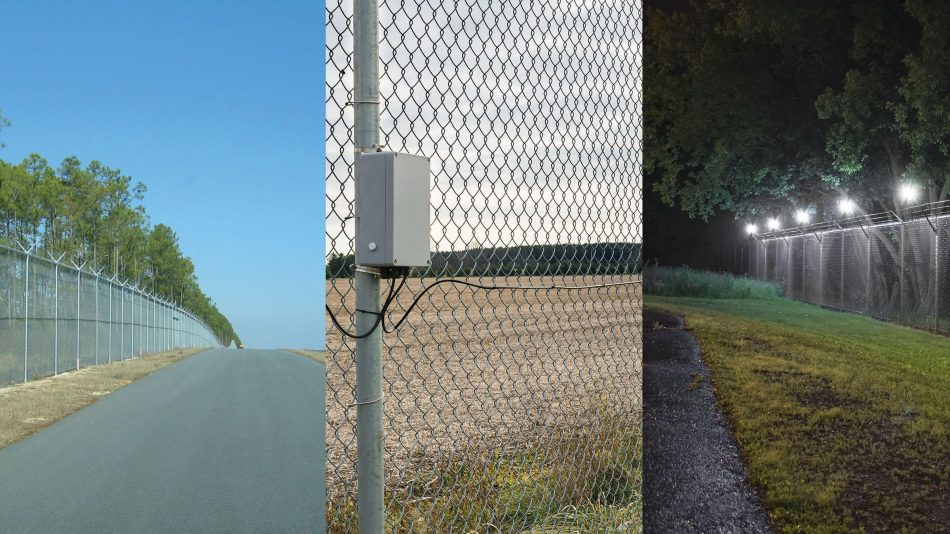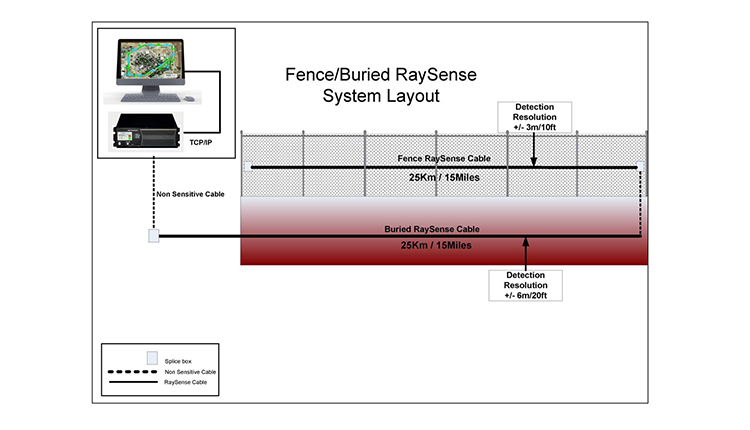How to Integrate a Fiber Optic Security System into Your Current Security Setup for Enhanced Performance
How to Integrate a Fiber Optic Security System into Your Current Security Setup for Enhanced Performance
Blog Article
The Ultimate Guide to Fiber Optic Security Solutions for Your Service
In an era where security worries are extremely important for organizations, understanding the ins and outs of fiber optic technology can be transformative. This overview outlines how integrating fiber optic protection systems not just improves data security however additionally supplies benefits like resistance to interference and real-time tracking capacities.
Comprehending Fiber Optic Technology

The core of a fiber optic cord includes a slim glass or plastic facility, bordered by a cladding layer that shows light back right into the core. fiber optic security system. This design ensures very little loss of signal stamina, also over comprehensive ranges. There are two primary sorts of fiber optic cords: single-mode and multi-mode. Single-mode fibers are created for long-distance transmission, while multi-mode fibers are appropriate for much shorter distances, commonly made use of within structures.
Optical fiber are not only quicker but also more protected than standard circuitry. Their intrinsic resistance to electro-magnetic disturbance and the problem of taking advantage of the signal without detection make them a preferred option for services prioritizing information honesty and safety and security. As organizations increasingly count on secure and reliable communication systems, recognizing fiber optic technology comes to be essential for educated decision-making.
Secret Benefits of Fiber Optic Security
When thinking about safety and security alternatives for an organization, the advantages of fiber optic systems are especially engaging. First and foremost, fiber optic innovation offers remarkable data transmission rates and data transfer ability, making it ideal for dealing with high-resolution video feeds from monitoring electronic cameras. This ability makes certain that safety workers obtain real-time information, improving overall action times to potential security dangers.
Additionally, fiber optic wires are naturally immune to electromagnetic interference, which can jeopardize the stability of standard copper-based systems. This resistance guarantees that the information transferred continues to be protected and nonstop, giving a much more trusted safety framework. Additionally, optical fiber are much less prone to physical damages, as they are made from glass instead of metal, lowering upkeep costs and downtime.
Fiber optic systems use boosted cybersecurity features, including file encryption abilities that shield sensitive data from unauthorized accessibility. Jointly, these advantages make fiber optic protection systems a durable selection for organizations seeking to improve their safety and security procedures.
Setup Refine and Considerations
Taking into consideration the intricacies entailed, the installment procedure of fiber optic safety and security systems needs cautious planning and implementation. The preliminary step includes an extensive site analysis to determine optimum areas for cabling and tools. This analysis must consider ecological variables, existing facilities, and prospective vulnerabilities.

Additionally, the installment has to abide by regional building ordinance and market criteria. This might include collaborating with numerous stakeholders such as building supervisors, IT teams, Recommended Site and safety and security personnel to make certain seamless combination with existing systems.
Post-installation, extensive testing is essential to confirm system efficiency and recognize any type of issues that might occur. By prioritizing these considerations throughout the setup process, organizations can make sure a robust and efficient fiber optic safety and security system that fulfills their certain safety and security requirements.
Most Current Developments in Fiber Optic Security
Current advancements in fiber optic technology have substantially enhanced the capacities of safety and security systems for organizations. Among the most remarkable advancements is the integration of fiber optic sensors that can detect resonances and invasions along the border of a facility. These sensing units give real-time surveillance, enabling fast response to prospective breaches.
Furthermore, the growth of dispersed fiber optic sensing innovation enables the continual surveillance of huge areas with a single fiber wire. This technique not just reduces setup prices yet also boosts the reliability of keeping an eye on systems by removing the need for several, separate sensors.
Moreover, advancements in multiplexing techniques have actually made it possible for businesses to transmit large amounts of data over fiber optic networks, improving the capabilities of video surveillance systems. High-definition video feeds can currently be sent over long distances without loss of quality, guaranteeing that safety personnel have access to clear and actionable information.
Lastly, using fabricated knowledge (AI) along with fiber optic systems is changing risk detection. AI algorithms can examine data from fiber optic networks to identify unusual patterns or behaviors, allowing for aggressive safety procedures. These technologies jointly stand for a considerable leap ahead in fiber optic safety innovation.
Selecting the Right System for Your Company
Choosing the suitable fiber optic safety and security system for your company is essential for ensuring optimal protection and peace of mind. To make an enlightened option, examine your details protection requirements, thinking about factors such as the dimension of your facilities, the nature of your procedures, and prospective susceptabilities.
Begin by reviewing the degree of protection needed; as an example, risky environments might necessitate innovative systems with incorporated monitoring and invasion detection abilities. Next off, consider scalability; as your business grows, your security system should can broadening to suit boosted demands without considerable overhauls.
Furthermore, check out the integrity and efficiency of various systems. Look for carriers with established credibilities and client endorsements that testify to their solution top quality. It's additionally advisable to inquire concerning the modern technology's compatibility with existing framework, making certain a smooth assimilation procedure.
Verdict
In verdict, fiber optic protection systems provide a robust option for improving service safety and security facilities. The newest innovations additionally reinforce the efficiency of these her explanation systems, ensuring Going Here that services remain safe and secure and adaptable in an ever-evolving hazard landscape.
Report this page